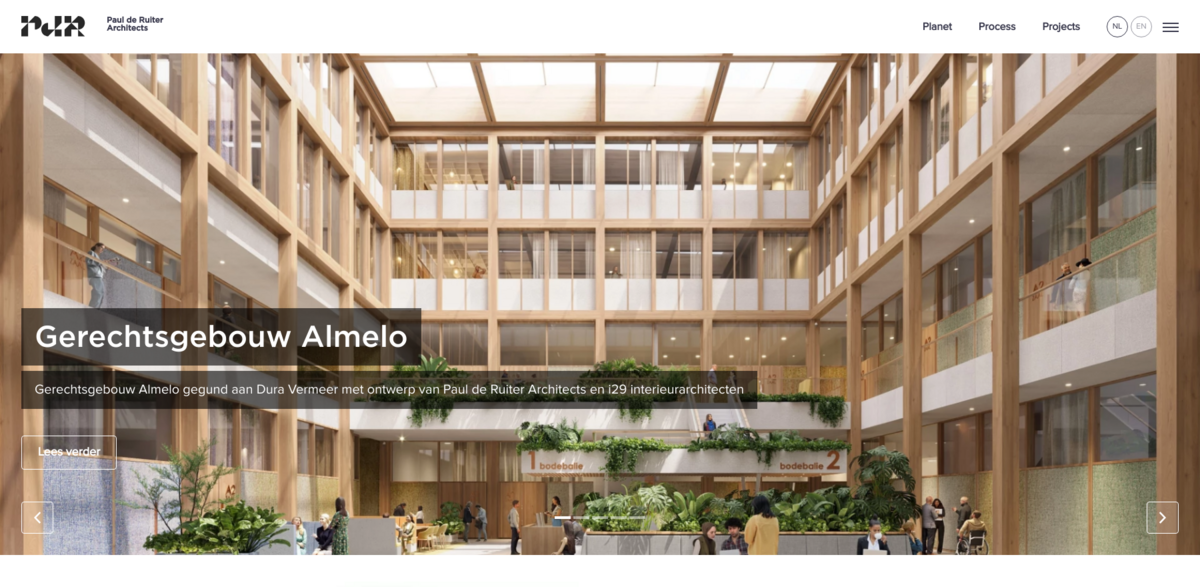What is Paul de Ruiter Architects’ Approach?
Paul de Ruiter Architects is a visionary firm known for its innovative projects that blend architecture with sustainability. From the Gerechtsgebouw Almelo court building to the Lloyd Yard’s robust living spaces, their portfolio showcases a commitment to future-proof design. Each project reflects a deep understanding of environmental responsibility, health, and daylight, creating spaces that are not just functional but also inspiring. Their work spans educational buildings like the Langeveld Building at Erasmus University Rotterdam, to dynamic public spaces such as the Schouwburg Ogterop theatre, all designed with a keen eye on circular economy principles and Cradle to Cradle philosophy.
Main Benefits of Their Projects
These projects don’t just look good—they deliver measurable benefits:
- B Corp certified since 2016, with a strong score of 88, highlighting social and environmental impact
- Focus on Net Zero energy solutions, reducing carbon footprints dramatically
- Integration of autarkic systems that promote self-sufficiency and resilience
- Prioritization of health and wellbeing through abundant daylight and natural ventilation
- Use of circular economy strategies to minimize waste and maximize resource efficiency
Innovative Project Highlights
Take the Gerechtsgebouw Almelo, for example. Awarded to Dura Vermeer with design by Paul de Ruiter Architects and i29 interior architects, it’s a court building that’s as sustainable as it is striking. Or the HS Rotterdam Business School, a new home for all economic programs that embodies future-proof educational real estate. Each project tells a story of thoughtful design, where every detail—from materials to energy use—is carefully considered to create spaces that serve people and planet alike.
Commitment to Sustainability and Health
What sets Paul de Ruiter Architects apart is their holistic approach. Sustainability isn’t just a buzzword here; it’s embedded in every brick and beam. Their buildings harness daylight to boost occupant health, reduce energy consumption, and create vibrant environments. The firm’s dedication to Cradle to Cradle principles ensures materials are chosen for their ability to be reused or recycled, closing the loop in the building lifecycle. This approach supports not only environmental goals but also enhances user comfort and productivity.
Expanding the Vision: Circular Economy and Autarky
Beyond individual buildings, the firm champions broader concepts like circular economy and autarkic design. Circular economy means designing with the end in mind—materials flow in cycles rather than ending up as waste. Autarkic systems push this further by enabling buildings to operate independently, generating their own energy and managing resources smartly. This vision is evident in projects like the Zeeburgerpad and Enexis LOC Noord, where sustainability meets innovation head-on.
Impact on Sustainable Development Goals (SDGs)
- SDG 3: Good Health and Well-being
- SDG 7: Affordable and Clean Energy
- SDG 9: Industry, Innovation, and Infrastructure
- SDG 11: Sustainable Cities and Communities
- SDG 12: Responsible Consumption and Production
- SDG 13: Climate Action
Looking Ahead: The Future of Architecture with Paul de Ruiter
Paul de Ruiter Architects continues to push boundaries, proving that architecture can be a powerful force for positive change. Their projects, from Lelystad Airport’s terminal to the Transformation C93, showcase how design can meet the demands of today while anticipating tomorrow’s challenges. With a clear focus on sustainability, health, and circularity, they’re not just building structures—they’re shaping a better future for communities and the planet.





















